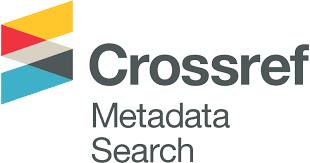Nghiên cứu ảnh hưởng của nhiệt độ sấy nóng khí nạp đến đặc tính cháy HCCI bằng phần mềm mô phỏng AVL boost
Email:
khuongha82@utc.edu.vn
Từ khóa:
HCCI, n heptan, động cơ diesel Kubota BD178F(E).
Tóm tắt
Động cơ cháy do nén hỗn hợp đồng nhất (homogeneous charge compression ignition – HCCI) có ưu thế về phát huy công suất và giảm phát thải nên đang được nhiều nhà khoa học quan tâm nghiên cứu. Nghiên cứu này đánh giá ảnh hưởng của nhiệt độ sấy nóng khí nạp tới đặc tính cháy và thời điểm bắt đầu cháy của động cơ hoạt động theo cơ chế cháy do nén hỗn hợp đồng nhất (homogeneous charge compression ignition – HCCI), động cơ dùng trong nghiên cứu này được chuyển đổi từ động cơ diesel 1 xi lanh Kubota BD178F(E) với đường nạp được cải tiến nhằm phun n heptan trên đường nạp và trang bị thêm hệ thống sấy nóng khí nạp. Kết quả mô phỏng động cơ HCCI phần mềm mô phỏng AVL – BOOST tại tốc độ 2400 vg/ph, 50% tải cho thấy: Tăng nhiệt độ sấy nóng khí nạp thời điểm bắt đầu cháy sớm dần, động cơ HCCI hoạt động ổn định khi nhiệt độ sấy nóng khí nạp từ 50ºC đến 80ºC, không nên tăng nhiệt độ sấy nóng khí nạp quá 90ºC vì không giữ được đặc tính cháy HCCI nữa.Tài liệu tham khảo
[1]. J.B. Heywood, Internal Combustion Engine Fundamentals, (2018), McGraw-Hill Education, New York, United States.
[2]. R.H. Thring, Homogeneous-charge compression ignition (HCCI) engines, In 1989 SAE International Fall Fuels and Lubricants Meeting and Exhibition, SAE Technical Paper 892068. SAE International, Baltimore, Maryland, USA, September, 1989. https://doi.org/10.4271/892068
[3]. H. Ma, H. Xu, J. Wang, T. Schnier, B. Neaves, C. Tan, Z. Wang, Model-Based Multiobjective Evolutionary Algorithm Optimization for HCCI Engines, IEEE Transactions on Vehicular Technology, 64 (2015) 4326-4331. https://doi.org/10.1109/TVT.2014.2362954
[4]. X. Han, P. Divekar, M. Zheng, J. Tjong, Empirical investigation and control-oriented modeling of n-butanol HCCI for improving combustion controllability, Fuel, 280 (2020) 118551. https://doi.org/10.1016/j.fuel.2020.118551
[5]. Z. Zheng, M Xia, H. Liu, R.Shang, G. Ma, M Yao, Experimental study on combustion and emissions of n-butanol/biodiesel under both blended fuel mode and dual fuel RCCI mode, Fuel, 226(2018) 240-251. https://doi.org/10.1016/j.fuel.2018.03.151
[6]. G. R. Gawale, G. N. Srinivasulu, Experimental investigation of propanol dual fuel HCCI engine performance: Optimization of propanol mass flow rate, impact of butanol blends (B10/ B20/B30) as fuel substitute for diesel, Fuel, 279 (2020) 118535. https://doi.org/10.1016/j.fuel.2020.118535
[7]. S. Cho, D. L. Pintor, Understanding the effects of doping a regular E10 gasoline with EHN in an HCCI engine: Experimental and numerical study, Fuel, 329 (2022) 125456. https://doi.org/10.1016/j.fuel.2022.125456
[8]. U. P. Nayak, F. Mücklich, M. A. Guitar, Interplay between the microstructure and tribological performance of a destabilized 26 wt% Cr HCCI: The influence of temperature and heating rate, Tribology International, 185 (2023) 108532. https://doi.org/10.1016/j.triboint.2023.108532
[9]. M. Alrbai, S. Al-Dahidi, M. Abusorra, Investigation of the main exhaust emissions of HCCI engine using a newly proposed chemical reaction mechanism for biogas fuel, Case Studies in Thermal Engineering, 26 (2021) 100994. https://doi.org/10.1016/j.csite.2021.100994
[10]. K. Banke, D. Freund, B. Atakan, S.n A. Kaiser, Evaluation of fuel additives for HCCI engines operated on fuel-rich methane/air mixtures: DME, DEE, and n-heptane, Applications in Energy and Combustion Science, 13 (2023) 100112. https://doi.org/10.1016/j.jaecs.2023.100112
[11]. S. M. S. Ardebili, H. Solmaz, A. Calam, D. Ipci, Modelling of performance, emission, and combustion of an HCCI engine fueled with fusel oil-diethylether fuel blends as a renewable fuel, Fuel, 290(15) (2021) 120017. https://doi.org/10.1016/j.fuel.2020.120017
[12]. AVL 5402.030 engine manual, edtion 2024
[2]. R.H. Thring, Homogeneous-charge compression ignition (HCCI) engines, In 1989 SAE International Fall Fuels and Lubricants Meeting and Exhibition, SAE Technical Paper 892068. SAE International, Baltimore, Maryland, USA, September, 1989. https://doi.org/10.4271/892068
[3]. H. Ma, H. Xu, J. Wang, T. Schnier, B. Neaves, C. Tan, Z. Wang, Model-Based Multiobjective Evolutionary Algorithm Optimization for HCCI Engines, IEEE Transactions on Vehicular Technology, 64 (2015) 4326-4331. https://doi.org/10.1109/TVT.2014.2362954
[4]. X. Han, P. Divekar, M. Zheng, J. Tjong, Empirical investigation and control-oriented modeling of n-butanol HCCI for improving combustion controllability, Fuel, 280 (2020) 118551. https://doi.org/10.1016/j.fuel.2020.118551
[5]. Z. Zheng, M Xia, H. Liu, R.Shang, G. Ma, M Yao, Experimental study on combustion and emissions of n-butanol/biodiesel under both blended fuel mode and dual fuel RCCI mode, Fuel, 226(2018) 240-251. https://doi.org/10.1016/j.fuel.2018.03.151
[6]. G. R. Gawale, G. N. Srinivasulu, Experimental investigation of propanol dual fuel HCCI engine performance: Optimization of propanol mass flow rate, impact of butanol blends (B10/ B20/B30) as fuel substitute for diesel, Fuel, 279 (2020) 118535. https://doi.org/10.1016/j.fuel.2020.118535
[7]. S. Cho, D. L. Pintor, Understanding the effects of doping a regular E10 gasoline with EHN in an HCCI engine: Experimental and numerical study, Fuel, 329 (2022) 125456. https://doi.org/10.1016/j.fuel.2022.125456
[8]. U. P. Nayak, F. Mücklich, M. A. Guitar, Interplay between the microstructure and tribological performance of a destabilized 26 wt% Cr HCCI: The influence of temperature and heating rate, Tribology International, 185 (2023) 108532. https://doi.org/10.1016/j.triboint.2023.108532
[9]. M. Alrbai, S. Al-Dahidi, M. Abusorra, Investigation of the main exhaust emissions of HCCI engine using a newly proposed chemical reaction mechanism for biogas fuel, Case Studies in Thermal Engineering, 26 (2021) 100994. https://doi.org/10.1016/j.csite.2021.100994
[10]. K. Banke, D. Freund, B. Atakan, S.n A. Kaiser, Evaluation of fuel additives for HCCI engines operated on fuel-rich methane/air mixtures: DME, DEE, and n-heptane, Applications in Energy and Combustion Science, 13 (2023) 100112. https://doi.org/10.1016/j.jaecs.2023.100112
[11]. S. M. S. Ardebili, H. Solmaz, A. Calam, D. Ipci, Modelling of performance, emission, and combustion of an HCCI engine fueled with fusel oil-diethylether fuel blends as a renewable fuel, Fuel, 290(15) (2021) 120017. https://doi.org/10.1016/j.fuel.2020.120017
[12]. AVL 5402.030 engine manual, edtion 2024
Tải xuống
Chưa có dữ liệu thống kê

Nhận bài
26/02/2025
Nhận bài sửa
08/04/2025
Chấp nhận đăng
10/04/2025
Xuất bản
15/04/2025
Chuyên mục
Công trình khoa học
Kiểu trích dẫn
Khương Thị, H. (1744650000). Nghiên cứu ảnh hưởng của nhiệt độ sấy nóng khí nạp đến đặc tính cháy HCCI bằng phần mềm mô phỏng AVL boost. Tạp Chí Khoa Học Giao Thông Vận Tải, 76(3), 258-270. https://doi.org/10.47869/tcsj.76.3.5
Số lần xem tóm tắt
81
Số lần xem bài báo
41









